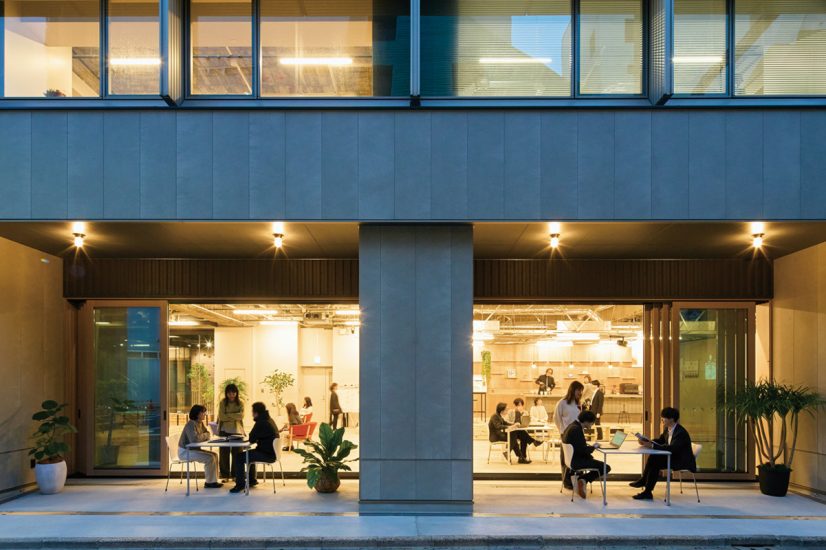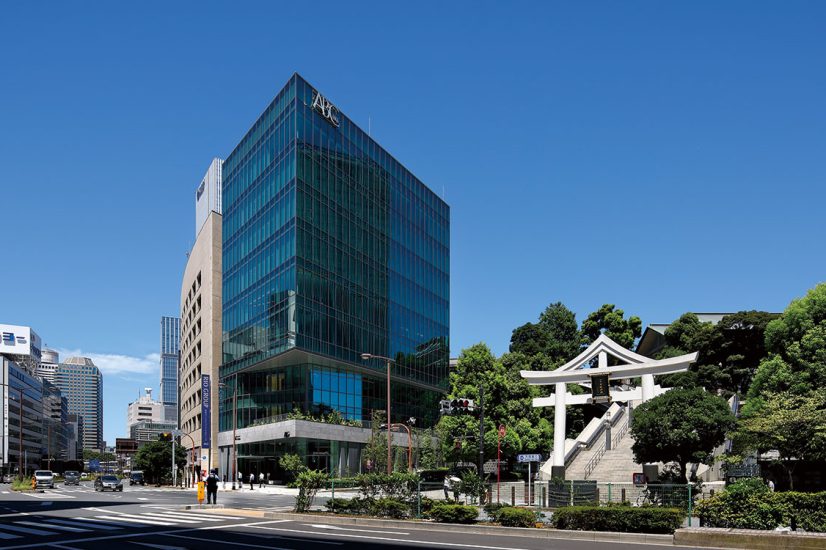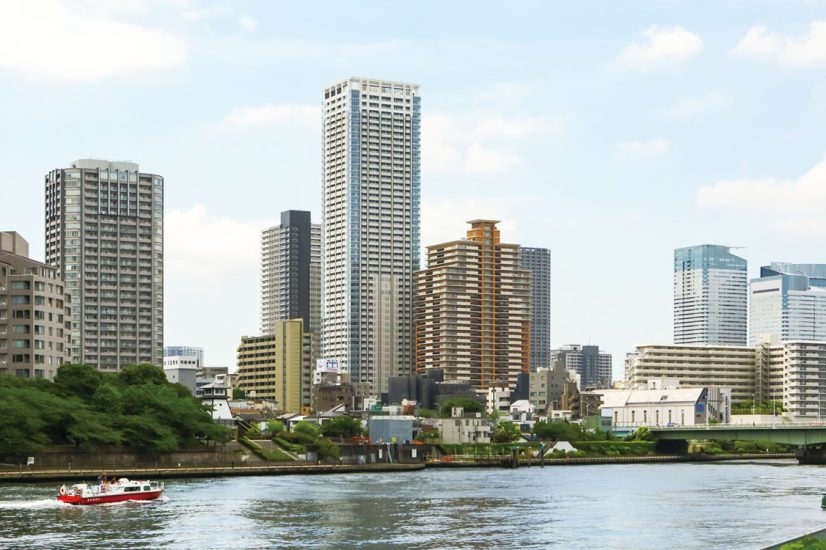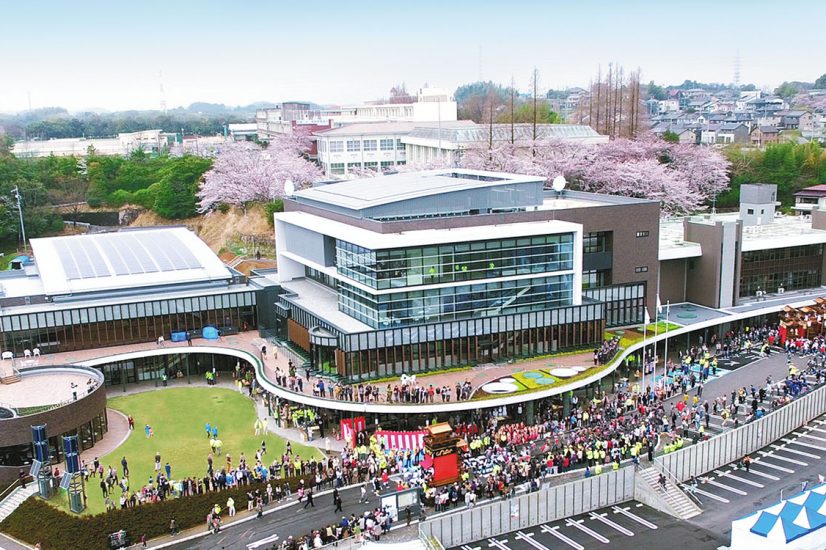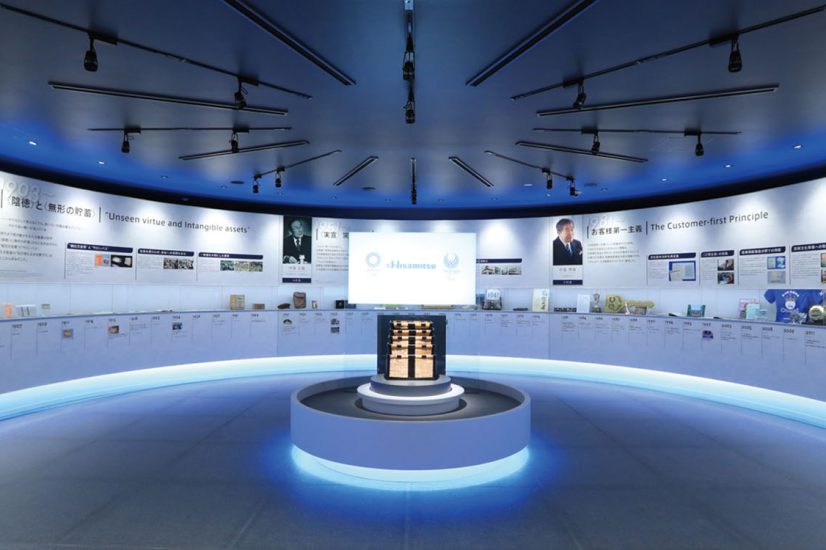Yasui Architects & Engineers, Inc.
Yasui Architects & Engineers, Inc.
Preserving architecture and urban landscapes for future generations
Tokyo National Museum
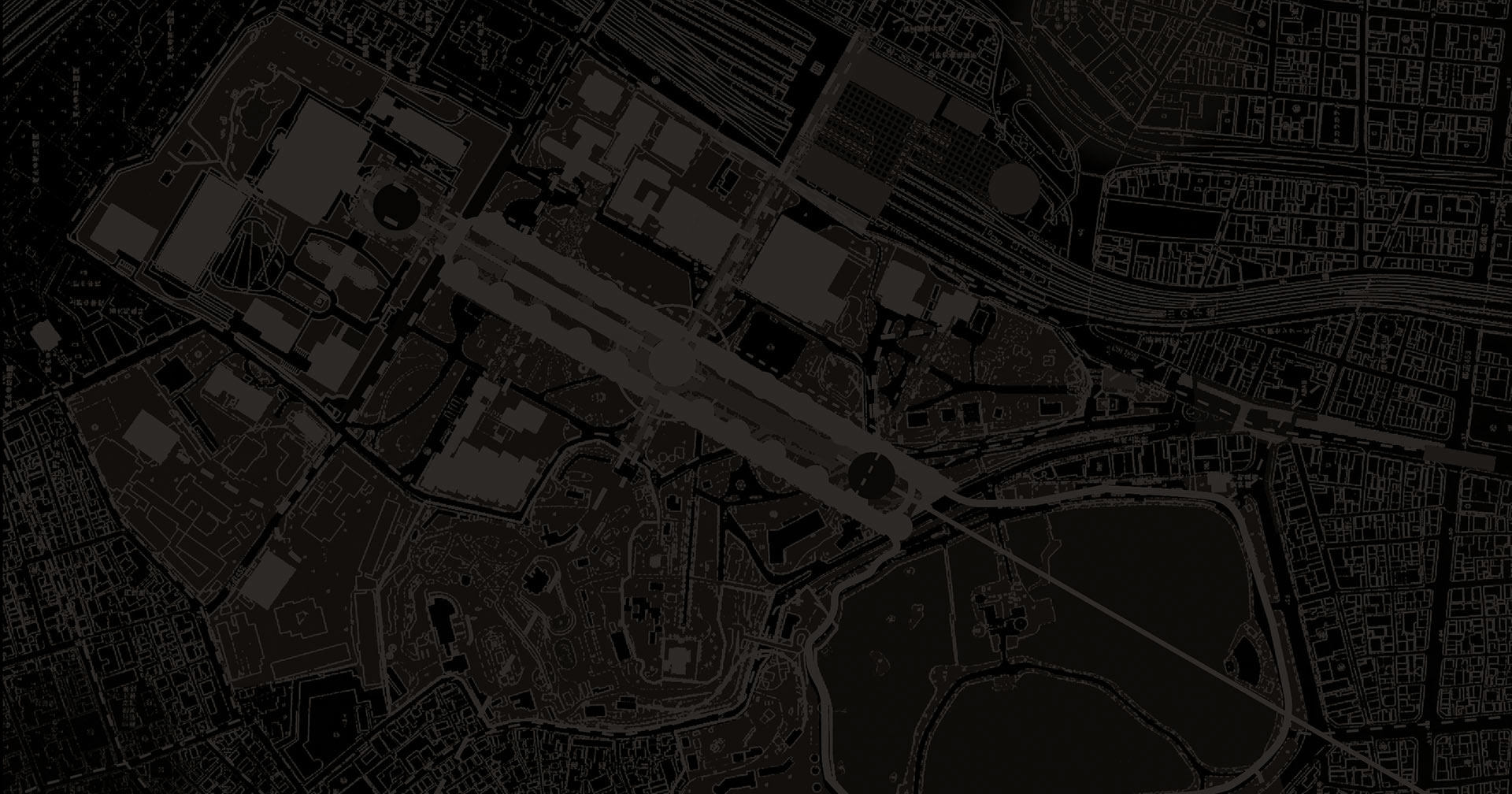
As the museum builds up its activities, the building evolves itself.
Witnessing this evolution through renovations and maintenance is the essence of museum
design
As the oldest museum in our country, established in Meiji year 5 (1872), the Tokyo National Museum (hereinafter referred to as TNM ) undertakes the storage, exhibition, and research of cultural assets from Japan and other Asian countries. The TNM, which relocated to Ueno Park in Meiji year 15 (1882), has survived through the Great Kanto Earthquake, World Wars, and other historical events, now comprising seven buildings: the Honkan (Main Building), Hyokeikan, Toyokan (Asian Gallery), Heiseikan, Horyuji Homotsukan (Gallery of Horyuji Treasures), Materials Hall, and Kuroda Memorial Hall .
Yasui Architects & Engineers, which contributed to the design of the Materials Hall completed in Showa 59 (1984), continued its involvement with the design of the Heiseikan completed in Heisei 11 (1999) in honor of His Imperial Highness the Crown Prince’s marriage, renovations of the Main Building, Toyokan, Hyokeikan, and Kuroda Memorial Hall, and also the design of the new Main Gate Plaza . For over three decades, we have been engaged with the TNM’s architecture, a complex that carries the significant role of protecting national cultural properties and ensuring their succession.
Sakon Kimura , who has been involved in the design of museums and halls both in Japan and internationally, including the Heiseikan and Main Gate Plaza designs and renovations of other buildings, comments, “With museums and halls, the “software”—the activities that take place—builds up, allowing the “hardware,” the building itself, to grow. It’s not just about completing a building; the joy of our work is witnessing the building’s continuous growth and evolution through renovation and maintenance. Moreover, the sequence of buildings also becomes a display of each era’s architectural techniques and design trends, which is a distinctive feature of the TNM.”
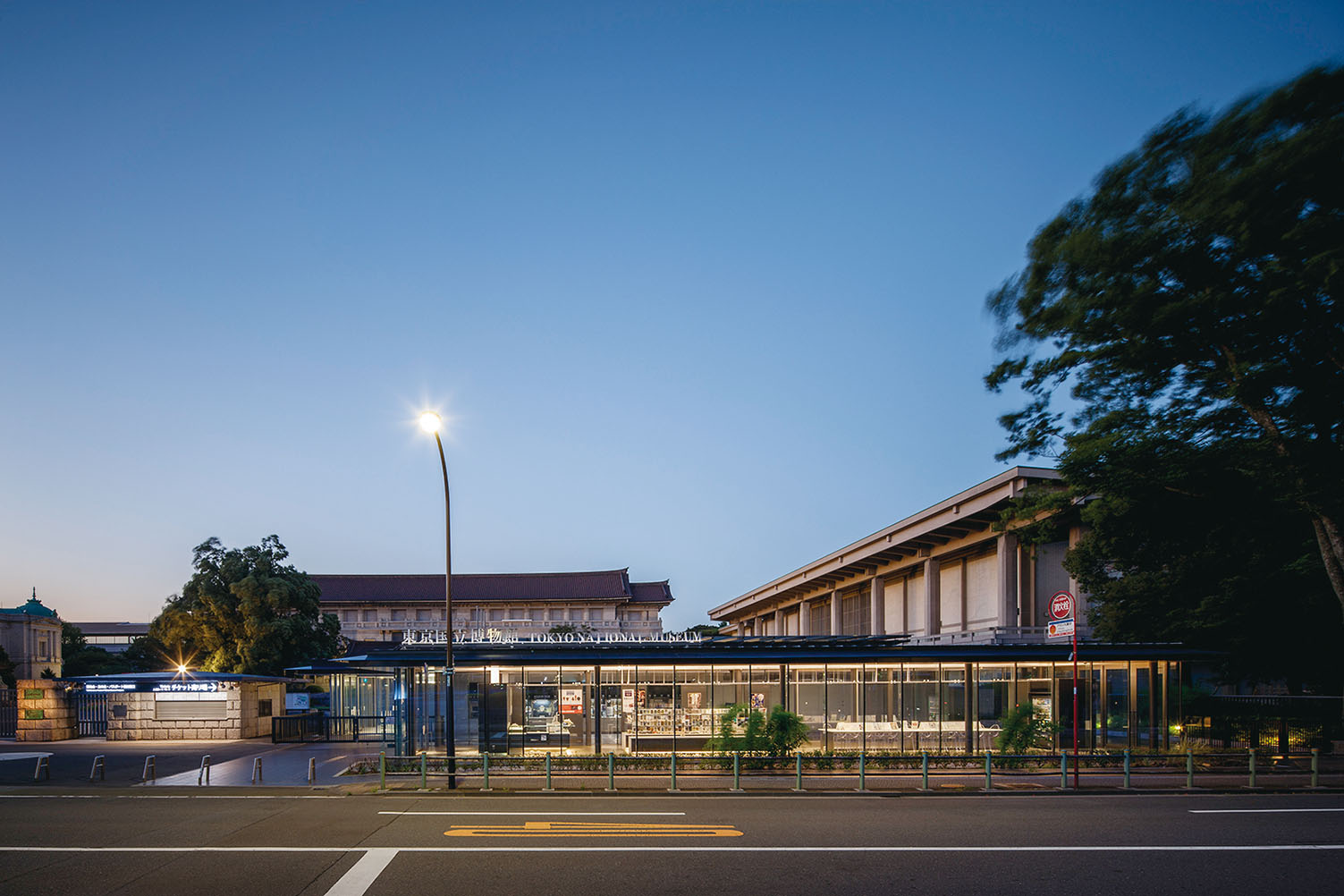
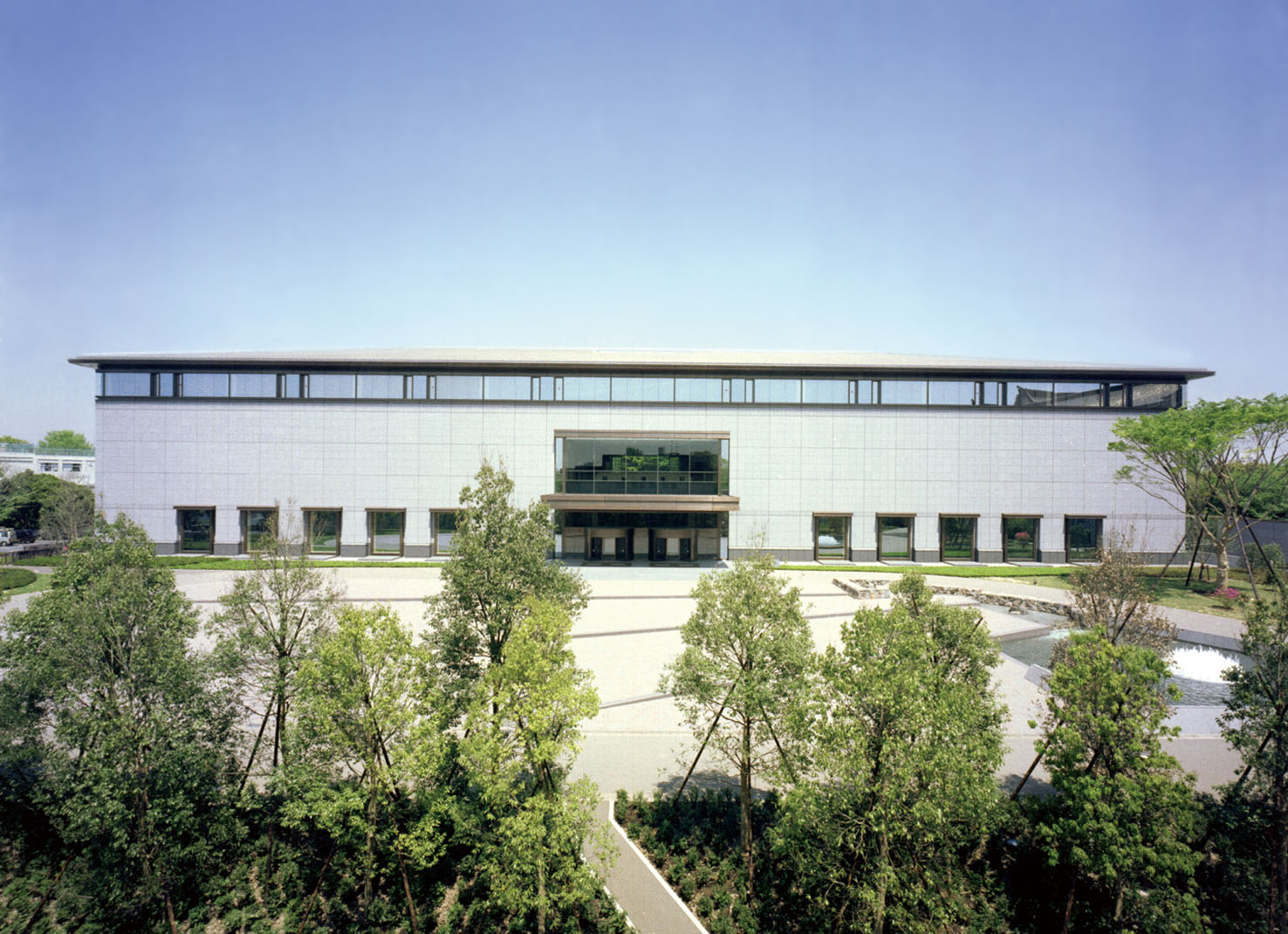
Creating a landscape atop the historic and urban axis of the land “Ueno forest ”
This clear directive led to the proposal of the concept of turning “Ueno forest into the Louvre.”
The Heiseikan, designed to embody and express the Heisei era and completed by the end of the Showa period, incorporated the latest technologies of the time. The museum, which for the first time included a large exhibition hall and auditorium dedicated to special exhibitions at TNM, has been designed to fulfill the meticulous requests of researchers, including temperature and humidity control, ensuring the best possible preservation and display of cultural assets. However, equally or more important to Kimura was considering the TNM’s existence within the entire Ueno forest’s landscape from a bird’s-eye view.
Kimura says, “The design and construction period for the Heiseikan was lengthy, and during that time, I was researching the history of Ueno forest. On the site, I worked in continuation of that history, experiencing the land’s story while mindful of the urban axis connecting Edo Castle and Kan’ei-ji Temple .”
TNM is built on the former site of Kan’ei-ji Temple, which, at its height, boasted a precinct that extended over 300,000 tsubo (approximately 990,000 square meters) centered around Ueno Park. The building ensemble situated on this urban axis has a shared characteristic with the Louvre in Paris, as Kimura observes. From the Imperial Lounge on the second floor of the Main Building—originally designated for the imperial family—it was once possible to view the keep of Edo Castle, just as the buildings on this axis are positioned today.
“Beyond the Tokyo National Museum, Ueno forest encompasses numerous artistic and cultural institutions, including the National Museum of Western Art , the Tokyo Metropolitan Art Museum, and the Tokyo Bunka Kaikan . The scale of this cultural accumulation is comparable to that of the Louvre. From this standpoint came the proposal to connect these buildings underground like the Louvre, which could then forge a center of Japanese art and culture of similar stature. Such was the reasoning behind the initiative to “turn Ueno forest into the Louvre.”
Taking a bird’s-eye view of the entire Ueno forest and shaping the landscape along the urban axis, Kimura considers this approach as a directive for carrying on the legacy of TNM’s architectural ensemble, whether it involves new construction or renovation. “Renovations are often said to be more challenging than new constructions, but in designing within the history of the land and its various constraints, I do not feel there is much difference between the two. The distinction comes when addressing the renovations at TNM; it involves modifying structures that were originally designed with tremendous effort by architects who had mastered cutting-edge techniques of their time. As a fellow professional in architecture, I hold a deep respect for their work. This respect extends beyond the designers to the craftsmen whose hands have left their marks on these buildings. Preserving these traces is part of what differentiates renovation from new construction,” he articulates.
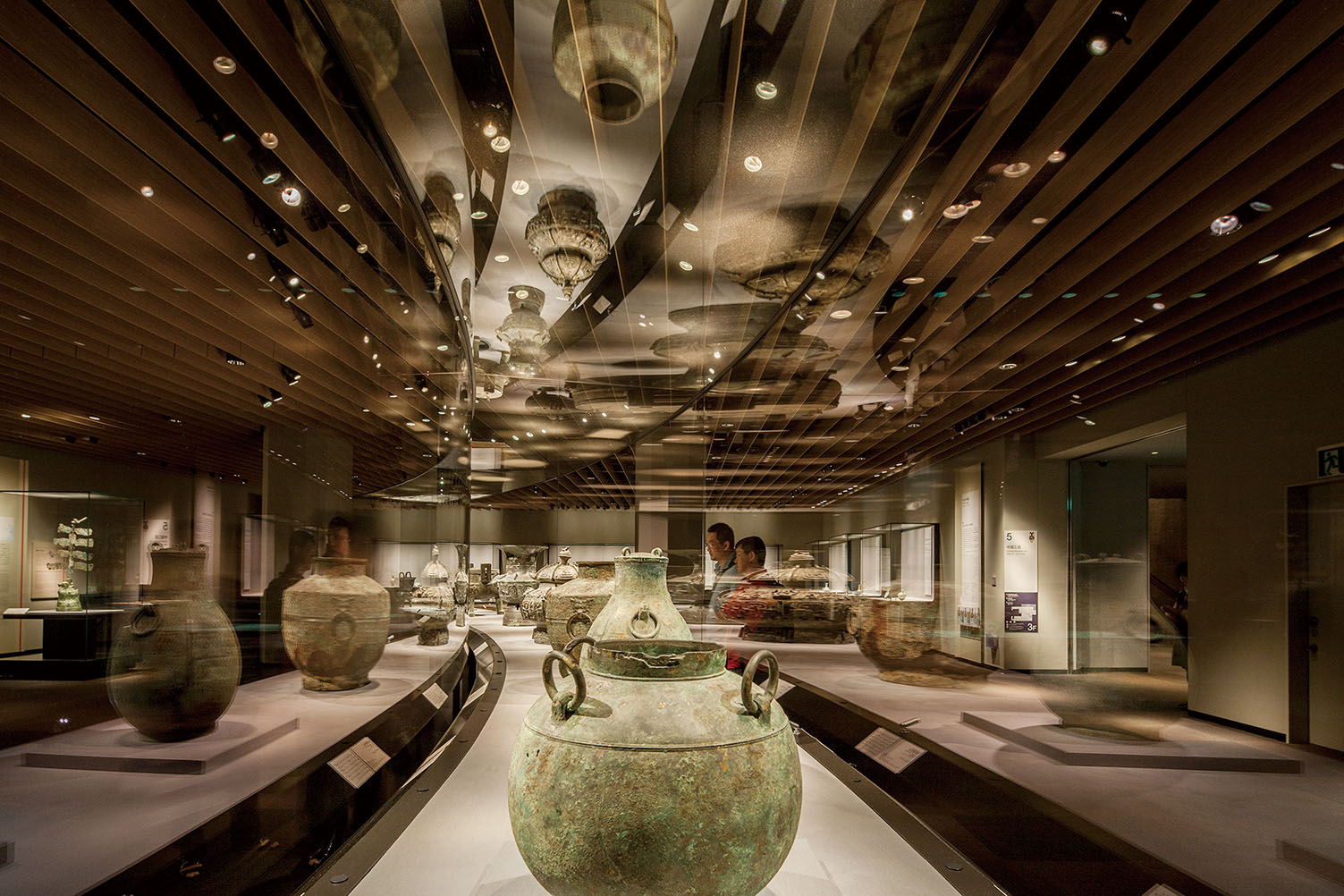
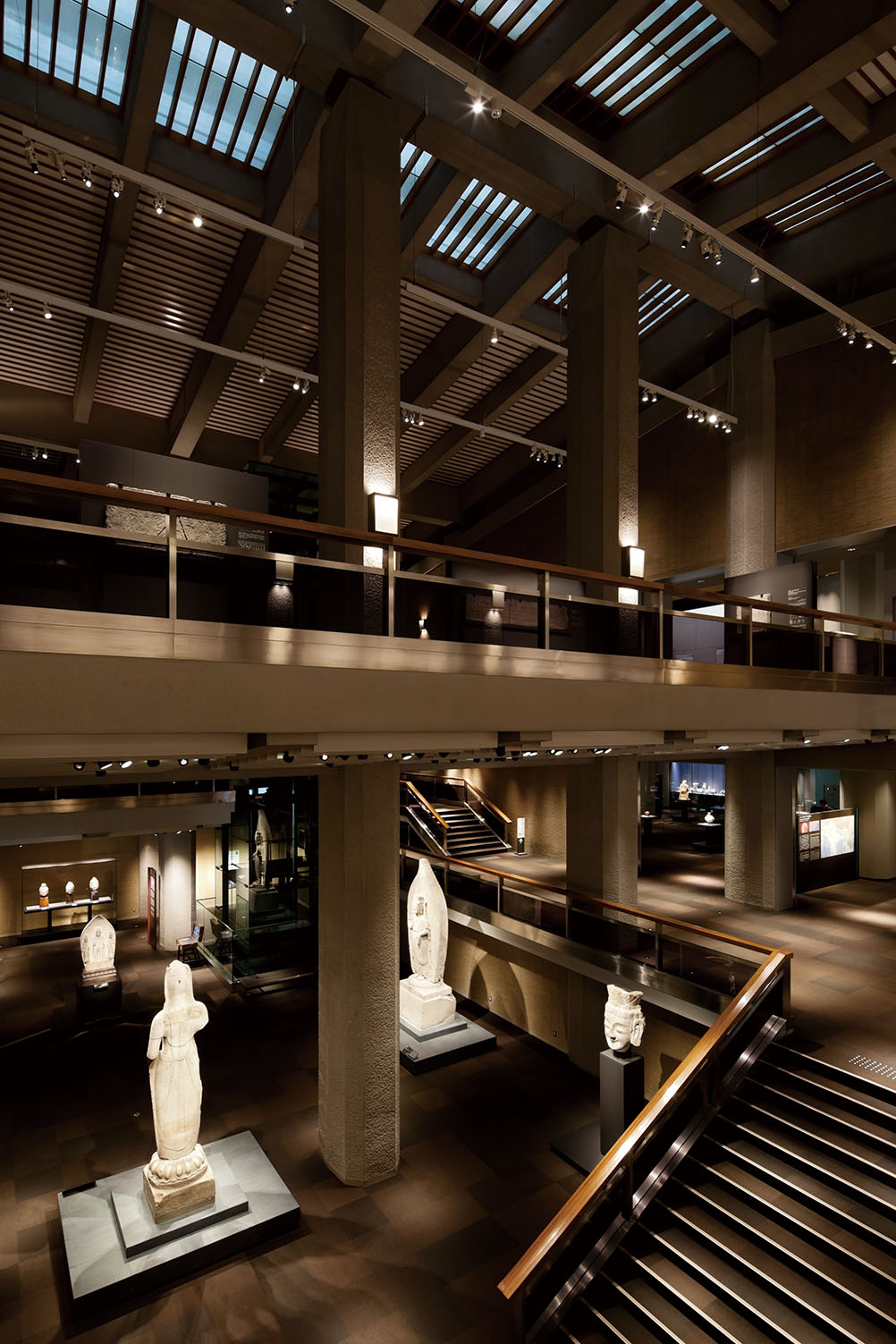
Without imposing the importance of cultural properties on the viewer, but rather displaying them naturally and casually, and preserving the inherited for future generations—that is the designer’s job.
The Heiseikan, inheriting a common spatial feature from the Main Building, the Hyokeikan, and the Toyokan—where a large central atrium space is flanked by exhibition rooms—is a robustly constructed building. It integrates a “six-sided vacuum flask structure” that employs long-lived materials for the double-layered outer walls and roof, providing a stable environment for the preservation and exhibition of the works. The large exhibition room, intended for special exhibitions where the country of origin and size of the works are unpredictable, is designed as a flexible, neutral white box that can accommodate varying heights and depths of display cases.
“Nothing less than perfection is acceptable when storing and exhibiting national treasures, so the Heiseikan was built with full-spec spaces for both display and storage. While designing, we learned a great deal from the researchers, and the knowledge acquired has been applied to the renovations of other buildings as well,” Kimura says.
The exhibition method allows the viewer to see the entire room from front to back so that they can perceive the relationships between items at a glance. The quality and placement of lighting highlights the artwork, and the high-performance glass—so clear and minimally reflective that it goes unnoticed—allows visitors to engage directly with the art. The wall colors selected best present the artwork... The exhibitions in the Heiseikan, the renovated ground floor of the Main Building, as well as the Toyokan and the Kuroda Memorial Hall, have shifted significantly from the previous approach of proudly presenting national treasures and important cultural properties, now incorporating subtle touches designed to showcase the artworks more naturally. Furthermore, in the Toyokan and Kuroda Memorial Hall, where seismic reinforcements have been made, the reinforcements are discreetly concealed behind display cases and walls to avoid drawing attention.
“Whether it’s Jomon pottery or characters written on paper, the only reason we can view these things today is because of the efforts of those who strove to preserve them. Effort alone is not enough; creating the space and employing technology is part of the sequence that allows us to casually observe, within the display cases, items that have been protected for hundreds or thousands of years. Museums are those places. Utilizing the most advanced technology of the era, such as high-performance glass and lighting, we aim to exhibit cultural properties in a manner that doesn’t make the viewer overly conscious of the stringent security but rather presents them in a natural and straightforward way. We, as designers, consider our role is to ensure what has been handed down through the ages will be definitively preserved for posterity,” states Kimura.
For the series of new constructions and renovations, the role of the museum is not only to maintain the optimal environment for storage and exhibition but also to facilitate a variety of educational and outreach activities. During the renovation of the Toyokan, a new VR theater was installed. Moreover, the Main Gate Plaza, which opened in April 2014, is another step towards making the TNM’s image more accessible. It features fully glazed showcases of the museum shop and a ticket booth with a rain shelter, to lower the threshold that was once perceived as high because of the museum’s grandeur.
How should Japan’s oldest museum, which houses cultural properties of national treasure caliber, exist? As the designer recounts, decisions were often made beyond personal intentions, within the larger context. The architecture and urban landscape that have been crafted over time, upon the urban axis and within Ueno forest, continue to tick forward, marking time for the next generation.
